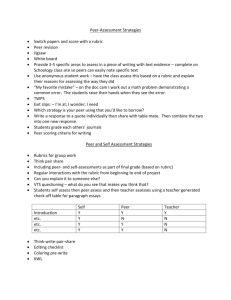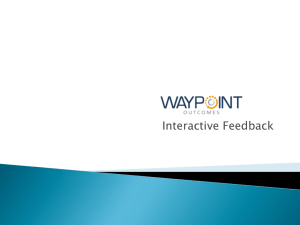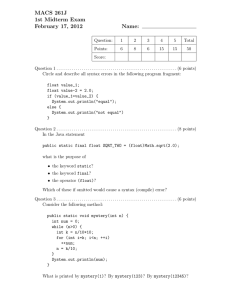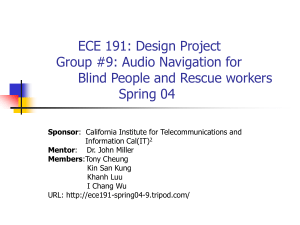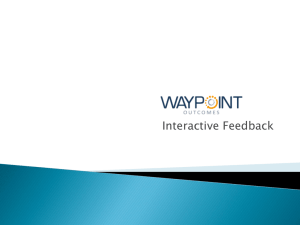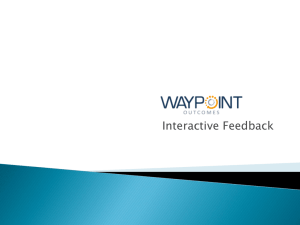Question/ topic addressed in article Article title Authors Study/ article
advertisement
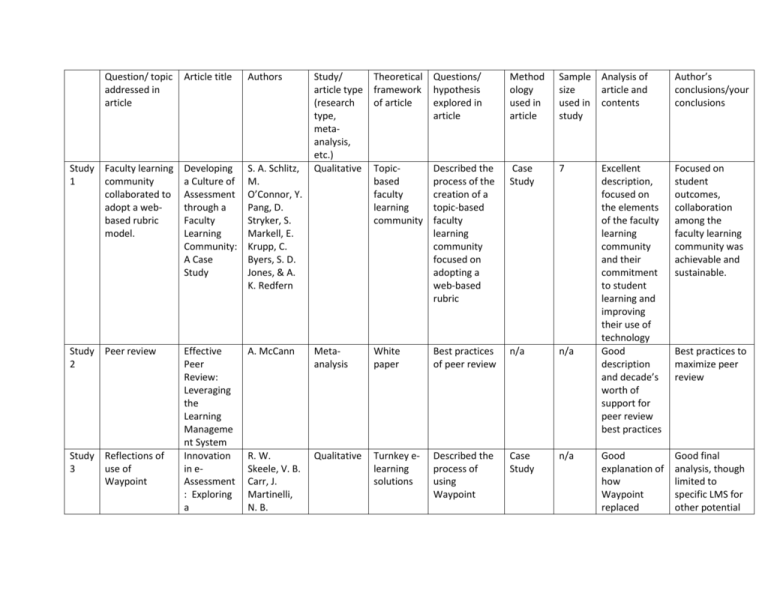
Question/ topic addressed in article Article title Authors Study Faculty learning 1 community collaborated to adopt a webbased rubric model. Developing a Culture of Assessment through a Faculty Learning Community: A Case Study S. A. Schlitz, M. O’Connor, Y. Pang, D. Stryker, S. Markell, E. Krupp, C. Byers, S. D. Jones, & A. K. Redfern Study Peer review 2 Effective Peer Review: Leveraging the Learning Manageme nt System Innovation in eAssessment : Exploring a Study Reflections of 3 use of Waypoint Study/ article type (research type, metaanalysis, etc.) Qualitative Theoretical framework of article Questions/ hypothesis explored in article Method ology used in article Sample Analysis of size article and used in contents study Author’s conclusions/your conclusions Topicbased faculty learning community Described the process of the creation of a topic-based faculty learning community focused on adopting a web-based rubric Case Study 7 Focused on student outcomes, collaboration among the faculty learning community was achievable and sustainable. A. McCann Metaanalysis White paper Best practices of peer review n/a n/a Excellent description, focused on the elements of the faculty learning community and their commitment to student learning and improving their use of technology Good description and decade’s worth of support for peer review best practices R. W. Skeele, V. B. Carr, J. Martinelli, N. B. Qualitative Turnkey elearning solutions Described the process of using Waypoint Case Study n/a Good explanation of how Waypoint replaced Good final analysis, though limited to specific LMS for other potential Best practices to maximize peer review Study Use of 4 Waypoint for accreditationdriven assessment Study Use of web5 based rubrics to enhance peer review Multidimen sional Tool Methods and Results of an Accreditatio n-Driven Writing Assessment in a Business College Sardone S. Warnock Qualitative Rubric evaluation Determine the effectiveness of the rubric Case Study 88 Peer assessment: A strategy for learning in a technology driven environmen t R. Skeele Qualitative Rubric evaluation Improving graduate level learning using web-based peer review assessment Case Study n/a other tools of assessment. Good analysis, clear details for reproduction users Good connections between technology use and improved learning Waypoint positively affected students use of peer review and meeting learning outcomes Waypoint improved validity of assessment References McCann, A. (2008). Effective peer review: Leveraging the learning management system. Waypoint Outcomes White Paper. Schlitz, S. A., O’Connor, M., Pang, Y., Stryker, D., Markell, S., Krupp, E., Byers, C., Jones, S. D., & Redfern, A. K. (2009). Developing a culture of assessment through a faculty learning community: A case study. International Journal of Teaching and Learning in Higher Education, 21, 1, 133-147. Skeele, R. W., Carr, V. B., Martinelli, J.,& Sardone, N. B. (2007). Innovation in e-Assessment: Exploring a multidimensional tool. Proceedings of World Conference on Educational Multimedia, Hypermedia and Telecommunications 2009 (pp. 3091-3099). Chesapeake, VA: AACE. Skeele, R. (2009). Peer assessment: A strategy for learning in a technology driven environment. In G. Siemens & C. Fulford (Eds.), Proceedings of World Conference on Educational Multimedia, Hypermedia and Telecommunications 2009 (pp. 3091-3099). Chesapeake, VA: AACE. Warnock, S. (January 01, 2009). Methods and results of an accreditation-driven writing assessment in a business college. Journal of Business and Technical Communication, 23, 1, 83-107.



